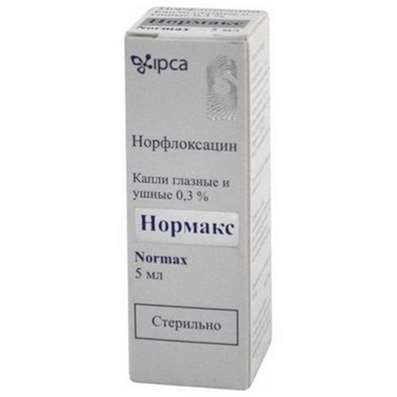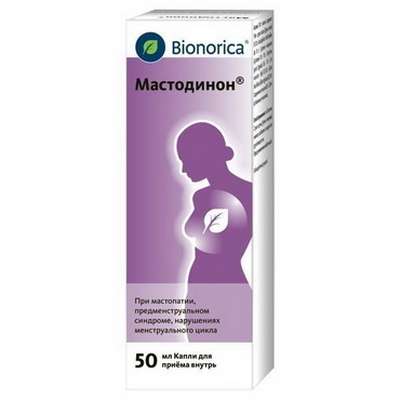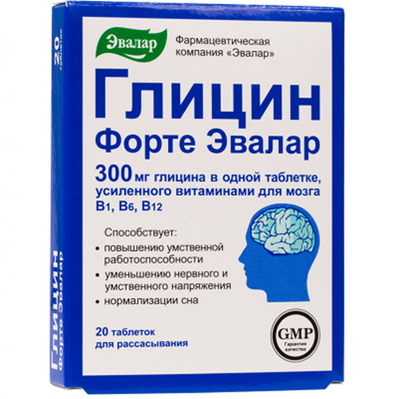Instruction for use: Latranum
I want this, give me price
Dosage form: Solution for intravenous and intramuscular administration; Coated tablets
Active substance: Ondansetron*
ATX
A04AA01 Ondansetron
Pharmacological groups:
Antiemetic means and preparations
Serotonergic agents
The nosological classification (ICD-10)
F10.3 Abstinence: Alcohol withdrawal syndrome; Abstinence syndrome; Abstinence syndrome with alcoholism; Abstinence; Alcohol abstinence; Alcohol withdrawal status; Alcohol withdrawal syndrome; Postabstinctive disorder; Post-abstinence condition; Hangover syndrome; Abstinence syndrome; Alcohol abstinence syndrome; Alcohol withdrawal syndrome; Abstinence condition
K21 Gastroesophageal reflux: Biliary reflux esophagitis; Gastrocardiac syndrome; Gastroesophageal reflux disease; Gastro-esophageal reflux disease; Gastroesophageal Reflux; Non-erosive reflux disease; Syndrome gastrocardiac; Remkheld Syndrome; Erosive reflux esophagitis; Ulcerative reflux esophagitis
K21.0 Gastroesophageal reflux with esophagitis: Reflux gastritis; Reflux esophagitis; Erosive-ulcerative esophagitis
K25 Stomach ulcer: Helicobacter pylori; Pain syndrome with gastric ulcer; Pain syndrome with peptic ulcer of stomach and duodenum; Inflammation of the gastric mucosa; Inflammation of the mucosa of the gastrointestinal tract; Benign ulcer of the stomach; Disease of the stomach and duodenum, associated with Helicobacter pylori; Exacerbation of gastroduodenitis against ulcer disease; Exacerbation of peptic ulcer; Exacerbation of gastric ulcer; Organic GI disease; Peptic ulcer of the stomach and duodenum; Postoperative Stomach Ulcer; Recovering ulcers; Symptomatic Stomach Ulcers; Chronic inflammatory disease of the upper gastrointestinal tract associated with Helicobacter pylori; Helicobacter pylori eradication; Erosive-ulcerative lesions of the stomach; Erosive lesions of the stomach; Erosion of the gastric mucosa; Peptic Ulcer; Stomach ulcer; Stomach ulcer; Ulcerative lesions of the stomach; Symptomatic ulcers of the stomach and duodenum
K26 Ulcer of duodenum: Pain syndrome with duodenal ulcer; Pain syndrome with peptic ulcer of stomach and duodenum; Disease of the stomach and duodenum, associated with Helicobacter pylori; Exacerbation of peptic ulcer; Exacerbation of duodenal ulcer; Peptic ulcer of the stomach and duodenum; Recurrence of duodenal ulcer; Symptomatic ulcers of the stomach and duodenum; Helicobacter pylori eradication; Erosive-ulcerative lesions of the duodenum; Erosion-ulcerative duodenal lesions associated with Helicobacter pylori; Erosive lesions of the duodenum; Peptic ulcer disease of the duodenum; Ulcerative duodenal lesions
K29.1 Other acute gastritis: Acute gastritis (erosive); Gastritis erosive; Acute gastritis
K29.5 Chronic gastritis, unspecified: Gastroenteritis; Metastasis of the gastric mucosa; Pain with chronic gastritis with high acidity; Gastritis chronic; Gastroenteritis; Acute gastroenteritis; Chronic gastritis; Chronic diseases of the digestive system; Chronic autoimmune gastritis; Chronic gastritis; Chronic gastritis in the acute stage; Chronic gastritis with normal secretory function; Chronic gastritis with normal secretory function of the stomach; Chronic gastritis with normal secretion; Chronic gastritis with increased and normal secretory function of the stomach; Chronic gastritis with increased secretory function; Chronic gastritis with increased secretion; Chronic gastritis with increased secretory function of the stomach; Chronic gastritis with a decreased secretory function; Chronic gastritis with secretory insufficiency
K91.3 Postoperative intestinal obstruction: Postoperative paralytic ileus
K94 * Diagnosis of digestive diseases: Hepatic and splenic scans; Visualization of the liver by invasive methods; Isotope scintigrams of the liver; Laparocentesis; Ultrasound examination of the liver; Magnetic resonance imaging of the liver; Computed tomography of the liver; Esophageal Manometry; Anoscopy; Visualization of the biliary tract; Ultrasonic visualization of the liver; Gastroscopy; Degassing of the intestine before diagnostic tests; Degassing of the intestine before X-ray examination; Gastrointestinal diagnostics; Diagnosis of bleeding from the small intestine; Diagnosis of focal pathology of the liver; Diagnosis of secretory ability and acid-forming function of the stomach; Diagnostic intervention on the large intestine; Duodenal sounding; Duodenoscopy; Instrumental studies of the abdominal cavity organs; Intraoperative cholangiography; Irrigoscopy; Examination of gastric secretion; Gastrointestinal tract examination; Study of acid-forming function of the stomach; Examination of secretory function of the stomach; Colonoscopy; Controlling the effectiveness of lithotripsy; Determination of the degree of hypersecretion in duodenal ulcer; Preparation for diagnostic tests; Preparation for X-ray and instrumental methods of abdominal examination; Preparation for X-ray and ultrasound examination of the abdominal organs; Preparation for X-ray or endoscopic examination of the digestive tract; Preparation for X-ray examination of the gastrointestinal tract with contrasting; Preparation for roentgenological examination of gastrointestinal tract with application of barium; Preparation for X-ray and ultrasound of the abdominal organs; Preparation for X-ray examination or ultrasound of the abdominal cavity organs; Preparation for ultrasound and radiographic examination of the abdominal cavity organs; Preparation for endoscopic examination of the lower parts of the colon; Preparation for endoscopic or roentgenologic examination of the lower intestine; Preparation of the lower GI tract for endoscopy; Preparation of the colon for instrumental and radiographic examinations; Preparation of the colon for X-ray and endoscopy; Recto-manoscopy; Rectoscopy; Radiography of the digestive tract; X-ray diagnosis of achalasia of the esophagus; X-ray diagnosis of diseases of the digestive tract; X-ray diagnostics of the digestive tract; Radiocontrast examination of bile ducts; Radiocontrast study of the digestive tract; Radiographic diagnosis of gastrointestinal tract; X-ray examinations of the digestive tract; X-ray examination of the duodenum and gallbladder; X-ray examination of the stomach; X-ray examination of the biliary tract and gallbladder; X-ray examination of the digestive tract; X-ray examination of the esophagus; Retrograde cholangiopancreatography; Retrograde endoscopic pancreatocholangiorentgenography; Sonography of the gastrointestinal tract; Splenoportography; Ultrasound of the abdominal cavity organs; Functional X-ray diagnostics for stomach diseases; Functional X-ray diagnostics for intestinal diseases; Cholangiography; Cholangiography in cholelithiasis; Cholangiopancreatography; Cholecystography; Esophagoscopy; Endoscopic retrograde pancreatography; Endoscopic retrograde cholangiopancreatography; Endoscopic interventions; Endoscopic examination of the digestive system; Endoscopic examination of the lower parts of the large intestine; Endoscopic examination of the digestive tract; Endoscopy; ERCPR; Panendoscopy
R11 Nausea and vomiting: Postoperative vomiting; Nausea; Vomiting; Vomiting in the postoperative period; Vomiting medication; Vomiting in the background of radiation therapy; Vomiting uncontrollable; Vomiting in radiation therapy; Persistent vomiting; Indomitable vomiting; Postoperative nausea; Vomiting with chemotherapy; Vomiting of the central genesis; Vomiting with cytotoxic chemotherapy; Persistent hiccups; Repeated vomiting
T51 Toxic effect of alcohol: Intoxication alcoholic; Alcohol intoxication; Intoxication with alcohol; Acute alcohol intoxication; Chronic alcohol intoxication
T90.5 Effects of intracranial injury: Condition after traumatic brain injury; Conditions after traumatic brain injury; Traumatic encephalopathy; Residual effects of traumatic brain injury; Recovery after traumatic brain injury; Conditions after traumatic brain injury
Z100 * CLASS XXII Surgical practice: Abdominal surgery; adenomectomy; Amputation; Coronary angioplasty; Angioplasty of the carotid arteries; Antiseptic skin treatment for wounds; Antiseptic Hand; Appendectomy; atherectomy; Balloon coronary angioplasty; Vaginal hysterectomy; The coronary bypass; Interventions in the vagina and cervix; Interventions on the bladder; Intervention in the mouth; Restoration and reconstructive surgery; Hand hygiene of medical personnel; Gynecologic surgery; Gynecological intervention; Gynecological surgery; Hypovolemic shock during operations; Disinfection of purulent wounds; Disinfection of wounds edges; Diagnostic intervention; Diagnostic procedures; Cervical Diathermocoagulation; Long-surgery; Replacing the fistula catheters; Infection in orthopedic surgery; Artificial heart valve; cystectomy; Short-term outpatient surgery; Short-term operation; Short surgical procedures; Krikotireotomiya; Blood loss during surgery; Bleeding during surgery and in the postoperative period; Kuldotsentez; laser photocoagulation; laser coagulation; retinal laser coagulation; Laparoscopy; Laparoscopy in Gynecology; CSF fistula; Small gynecological operations; Small surgical procedures; Mastectomy and subsequent plastic; mediastinotomy; Microsurgical operations on the ear; Mukogingivalnye operation; suturing; Minor surgery; neurosurgical operation; Immobilization of the eyeball in ophthalmic surgery; testectomy; pancreatectomy; Perikardektomiya; The period of rehabilitation after surgery; The period of convalescence after surgery; Percutaneous transluminal coronary angioplasty; Pleural thoracentesis; Pneumonia postoperative and posttraumatic; Preparation for surgical procedures; Preparation for surgery; Preparation of the surgeon's hands before surgery; Preparation of the colon for surgical procedures; Postoperative aspiration pneumonia in neurosurgical and thoracic surgery; Postoperative nausea; Postoperative bleeding; postoperative granuloma; postoperative shock; The early postoperative period; myocardial revascularization; Radiectomy; gastric Resection; bowel resection; uterine Resection; liver Resection; enterectomy; Resection of part of the stomach; Reocclusion of the operated vessel; Bonding tissues during surgical procedures; Removal of sutures; Condition after eye surgery; Condition after surgery; Condition after surgery in the nasal cavity; Condition after gastrectomy; Status after resection of the small intestine; Condition after tonsillectomy; Condition after removal of the duodenum; Condition after phlebectomy; Vascular surgery; Splenectomy; Sterilization of surgical instruments; Sterilization of surgical instruments; sternotomy; Dental surgery; Dental intervention in periodontal tissues; strumectomy; Tonsillectomy; Thoracic surgery; Thoracic surgery; total gastrectomy; Transdermal intravascular coronary angioplasty; Transurethral resection; Turbinektomiya; Removal of a tooth; cataract surgery; Removal of cysts; tonsillectomy; Removal of fibroids; Removing the mobile primary teeth; Removing polyps; Removing broken tooth; Removal of the uterus body; Removal of sutures; Fistula likvoroprovodyaschih ways; Frontoetmoidogaymorotomiya; Surgical infection; Surgical treatment of chronic limb ulcers; Surgery; The surgery in the anal area; The surgery on the colon; Surgical practice; The surgical procedure; Surgical interventions; Surgery on the gastrointestinal tract; Surgical procedures on the urinary tract; Surgical procedures on the urinary system; Surgical intervention of the genitourinary system; Surgical procedures on the heart; Surgical manipulation; surgery; Surgery on the veins; Surgical intervention; Vascular surgery; Surgical treatment of thrombosis; Surgery; cholecystectomy; Partial gastric resection; hysterectomy; Percutaneous transluminal coronary angioplasty; Percutaneous transluminal angioplasty; Coronary artery bypass; tooth Extirpation; Extirpation of milk teeth; pulpectomy; pulsative cardiopulmonary bypass; tooth Extraction; teeth Extraction; cataract extraction; Electrocoagulation; endourological intervention; episiotomy; Etmoidotomiya; Complications after tooth extraction
Z51.0 Radiotherapy course: Supplement to external radiation therapy; Local X-Ray Irradiation; Radiation therapy; Brain edema associated with radiation therapy; Lesion in radiation therapy; Radiotherapy
Z51.1 Chemotherapy for neoplasm: Cystitis hemorrhagic, caused by cytostatics; Urotoxicity of cytostatics
Z54 recovery period: The recovery period; The recovery period after illness; Recovery; The recovery from the flu and colds; Recovery after illness; The lack of mineral salts in the period of convalescence; The period of recovery after illness; The period of recovery after illness and surgery; The period of recovery after a serious illness; The period of convalescence after illness; rehabilitation period; rekovalestsentsii period after infectious diseases; decubation; The period of convalescence after surgery and infectious diseases; The period of convalescence after prolonged infections; The period of convalescence after serious diseases; The period of convalescence after severe infections; Rehabilitation period; convalescent state; Convalescence after illness; Convalescence after infectious diseases; Convalescence after debilitating diseases; Convalescence after infectious diseases; Convalescence at an elevated blood loss; Status of convalescence after illness
Z58.4 Effects of radiation contamination: Radiation damage; Acute radiation damage; Radiation syndrome
Composition and release form
Solution for intravenous and intramuscular injection 1 ml
Ondansetron hydrochloride dihydrate (in terms of base) 2 mg
Auxiliary substances: sodium chloride; Hydrochloric acid; water for injections
In ampoules of 2 or 4 ml; In a pack of cardboard 1; 2 or 5 pcs.
Tablets, coated with a coating.
Ondansetron hydrochloride dihydrate (in terms of base) 4 mg
Auxiliary substances: MCC; Silicon dioxide colloid (aerosil); potato starch; Magnesium stearate
Sheath composition: hydroxypropyl cellulose; Tween 80 (polysorbate); Tropeolin O; Castor oil
In a planar cell pack of 10; In a pack of cardboard 1 package, or in banks of dark glass to 0.4 (4000) and 0.8 kg (8000 pcs.).
Description of dosage form
Solution: colorless or almost colorless transparent liquid.
Tablets: coated tablets, yellow.
Pharmachologic effect
Mode of action - anti-abstinence, antiemetic.
Pharmacodynamics
Selective 5-HT3 receptor antagonist (serotonin). It inhibits the appearance of emetic effect by blockade of 5-HT3 receptors at the level of neurons of both the central and peripheral nervous system. It has anxiolytic activity, does not cause sedation, impaired coordination of movements or decreased activity and performance. It neutralizes somatic and psychopathological symptoms in alcohol withdrawal syndrome.
Pharmacokinetics
With the IM introduction of Cmax in the plasma is achieved within 10 minutes; After oral administration - after about 1.5 hours. Distribution of ondansetron is the same for oral, IM and IV the introduction. Absolute bioavailability is about 60%. Binding to plasma proteins - 70-76%. It is metabolized in the liver. With urine in unchanged form, less than 5% of the drug is released. Both after oral administration and with parenteral administration, T1 / 2 is about 3 hours, in elderly patients it can reach 5 hours, and with severe hepatic insufficiency - 15-32 hours. In renal damage (Cl creatinine <15 ml / min) T1 / 2 increases by 4-5 hours, but this increase has no clinical significance.
Indications of the drug Latranum
Nausea and vomiting caused by X-rays, radiotherapy or chemotherapy with antitumor drugs or exposure to ionizing radiation;
Prevention, prevention and elimination of nausea and vomiting in the postoperative period;
Symptomatic treatment of alcohol withdrawal syndrome (especially mild and moderate severity).
Contraindications
Hypersensitivity to any component of the drug;
pregnancy;
breast-feeding;
Children under 2 years of age (safety and efficacy in Russia have not been studied).
Side effects
From the nervous system: headache, dizziness, spontaneous movement disorders and convulsions.
From the cardiovascular system: pain in the chest, in some cases with depression of the ST segment, bradycardia, arrhythmias, arterial hypotension.
On the part of the intestine: hiccough, dry mouth, diarrhea, constipation, sometimes asymptomatic transient increase in the level of aminotransferases in the serum.
Allergic reactions: urticaria, bronchospasm, laryngospasm, angioedema, anaphylaxis.
Other: local reactions (pain, burning and redness at the injection site), a rush of blood to the face, a feeling of heat, a temporary disturbance of visual acuity, hypokalemia.
Interaction
Since ondansetron is metabolized by the enzyme system of the liver (cytochrome P450), caution is required when combined:
- with enzymatic inducers P450 (CYP2D6 and CYP3A) (barbiturates, carbamazepine, carisoprodol, glutetimide, griseofulvin, nitrous oxide, papaverine, phenylbutazone, phenytoin and probably other hydantoins, rifampicin, tolbutamide);
- with inhibitors of enzymes P450 (CYP2D6 and CYP3A) (allopurinol, macrolide antibiotics, antidepressants - MAO inhibitors, chloramphenicol, cimetidine, estrogen-containing oral contraceptives, diltiazem, disulfiram, erythromycin, valproic acid, sodium valproate, fluconazole, fluoroquinolones, isoniazid, ketoconazole, lovastatin , Metronidazole, omeprazole, propranolol, quinidine, quinine, verapamil).
Dosing and Administration
IV, IM, inside.
Cytostatic therapy: the choice of dosage regimen is determined by the emetogenicity of antitumor therapy. For adults, the daily dose is usually 8-32 mg, the following regimens are recommended:
With moderate emetogenic chemotherapy or radiotherapy
- 8 mg IV slowly or in the IM immediately before the start of therapy;
- 8 mg orally (2 tablets) 1-2 hours before the start of therapy, then another 8 mg (2 tablets) 12 hours after the start of therapy.
With highly emeticogenic chemotherapy
- 8 mg IV slowly before the start of chemotherapy, and then 2 more intravenous injections of 8 mg at intervals of 2-4 hours;
- Continuous 24-hour infusion at a dose of 24 mg at a rate of 1 mg / h;
- 16-32 mg, diluted in 50-100 ml of the appropriate infusion solution, in the form of a 15-minute infusion immediately before the start of chemotherapy.
The efficacy of Latranum® can be increased by a single intravenous glucocorticoid (eg 20 mg dexamethasone) before chemotherapy begins.
To prevent delayed emesis that occurs after the first 24 hours from the beginning of chemotherapy, it is recommended to continue taking the drug inside as tablets, 8 mg twice a day for 5 days.
Children older than 2 years of the drug is administered at a dose of 5 mg / m2 IV immediately before the start of chemotherapy, followed by oral administration at a dose of 4 mg after 12 hours; After the end of chemotherapy it is recommended to continue treatment in a dose of 4 mg orally 2 times a day for 5 days.
Prevention of postoperative nausea and vomiting: adults are given a single dose of 8 mg IM or IV slowly slowly at the beginning of anesthesia, or prescribed inside 16 mg for 1 hour before the onset of anesthesia. For relief of nausea and vomiting, an IM or slow iv injection of 8 mg of the drug is recommended. IM in the same part of the body Latranum® can be administered at a dose not exceeding 8 mg.
For the prevention of postoperative nausea and vomiting, Latranum® is used exclusively parenterally in a single dose of 0.1 mg / kg (maximum 4 mg) in the form of a slow intravenous injection before or after anesthesia. To treat the development of postoperative nausea and vomiting in children, a slow administration of a single dose of 0.1 mg / kg (maximum 4 mg) is recommended. In Russia, there is insufficient experience in using the drug to prevent and treat postoperative nausea and vomiting in children under 2 years of age.
When exposed to ionizing radiation, Latranum® is ingested orally at a single dose of 8 mg (2 tablets) 1 hour before or immediately after radiation exposure.
For symptomatic treatment of alcohol withdrawal syndrome, the drug is administered intravenously at a dose of 8 mg (in the form of a solution of 2 mg / ml, 4 ml) in 400 ml of hemodez, chloe or saline. If necessary, repeated administration of the drug is possible.
Elderly patients do not need to change the dosage.
Patients with renal lesions change the usual daily dose and the frequency of administration of the drug is not required.
If liver damage is necessary, reduce the dose to 8 mg per day.
To dilute the injection solution, the following solutions can be used: 0.9% sodium chloride solution; 5% glucose solution; Ringer's solution; 0.3% potassium chloride solution and 0.9% sodium chloride solution; 0.3% potassium chloride solution and 5% glucose solution.
Overdose
In cases of suspected overdose, symptomatic therapy is indicated.
In case of an overdose it is not recommended to use ipecacuanas, because It is unlikely that this drug will be effective during the period of the anti-emetic action of Latranum®.
Specific antidote is not known.
Special instructions
Hypersensitivity reactions with Latranum® can occur in patients previously observed for similar reactions with other selective 5-HT3 receptor antagonists.
Patients with signs of intestinal obstruction after the use of the drug require regular monitoring, because Ondansetron can cause constipation.
The infusion solution should be prepared immediately before use. If necessary, the ready-made infusion solution can be stored for a maximum of 24 hours at a temperature of 2-8 ° C.
During the infusion of light protection is not required: diluted injection solution retains its stability for at least 24 hours in natural light or normal light.
Storage conditions of the drug Latranum
In the dark place at a temperature of no higher than 25 ° C.
Keep out of the reach of children.
The shelf life of the drug Latranum
3 years.
Do not use beyond the expiration date printed on the package.

 Cart
Cart





